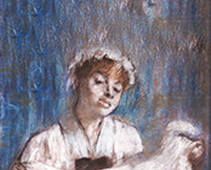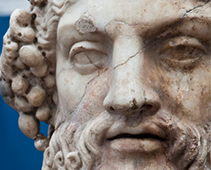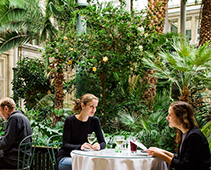Opening Hours
Tuesday - Sunday 11 a.m. - 5 p.m.
Closed on Mondays
Closed on the following days:
January 1st, June 5th, December 24th & 25th.
THE ARCHITECTURE OF THE GLYPTOTEK
ONE MUSEUM – MANY MANSIONS
The Vilhelm Dahlerup Building for the collection of Danish and French art and the Hack Kampmann Building for the collection of antiquities each highlights in its individual way the works of art it contains.
Carl Jacobsen chose the architect Vilhelm Dahlerup (1836-1907) to design a museum building for the collection of French and Danish art. It is a building of three wings in red brick in a historicist style, inspired by the Venetian Renaissance, and was opened in 1897. The interior is richly decorated with painted ceilings, friezes in relief along the walls, mosaic floors and marble columns.
Within a few years, however, Jacobsen realised that he had to add another building to house his collection of antiquities. This time it was the architect Hack Kampmann (1856-1920), who completed the museum with a four-winged building around a colonnaded central hall. Here the style is more classical and the south-facing façade is crowned with a step pyramid. Between the two main buildings Dahlerup added a large winter garden surmounted by a glass cupola. This whole new section was opened in 1906.
A modern, climate-controlled building, designed by architect Henning Larsen to house the collection of French paintings, was completed in 1996.




